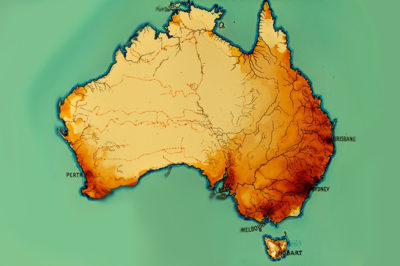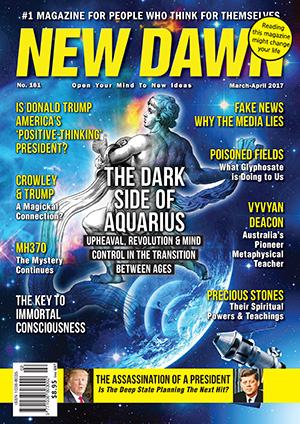From New Dawn 161 (Mar-Apr 2017)
Early twentieth century Australia saw a flowering of alternative spirituality when a number of communities, particularly in Sydney and Melbourne, embraced the influx of occult and spiritualistic practices from Victorian England.
A central figure linking many of the well-known characters and societies of the era was the young Vivian (later Vyvyan) Deacon (1895–1938), a medium, herbalist and respected public speaker. Among his circle of associates were Aleister Crowley, Krishnamurti, Annie Besant and Charles Webster Leadbeater, the author and spiritualist Sir Arthur Conan Doyle, and the artist Norman Lindsay. Deacon’s affiliations, that started out with the Order of the Star of the East, would go on to include Theosophy, Gnosticism, the Golden Dawn, Crowley’s OTO, and his own Christian Mystics of the Rosy Cross.
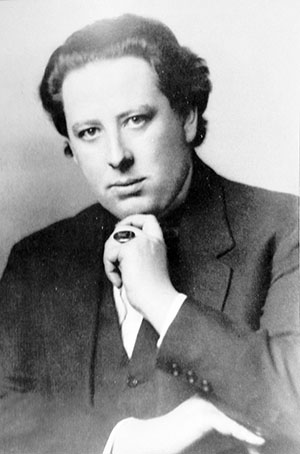
Certain recurring themes in Vyvyan’s life were established during his boyhood in England where he grew up, before setting out for Australia via India at the age of seventeen. From his father Cornelius he took on, probably at a subconscious level, the pattern of an itinerant healer, dispensing unconventional remedies to a needy public. ‘Corrie’, as he was affectionately known, came and went from the family home until, eventually, he just never came back. Although little Vyvyan was led to believe his father had died, Corrie lived on and was briefly reunited with his son before his actual death at Christmas in 1930. His passion for herbalism and alternative therapies passed on to Vyvyan, woven into the rich tapestry of his life and guiding his purpose. His absence was also to impress itself on the psyche of his offspring, resulting in Vyvyan’s own inability to settle down, with frequent separations from his future wife and family.
As a boy Vyvyan was frail and sensitive, given to bouts of ill health and often needing care. In place of formal schooling he received his education largely from Sunday schools, drama lessons and some home tutoring. Like many youngsters deprived of paternal attention, he was drawn to older father figures from an early age. At first these were clergymen and teachers, such as his local vicar Rev. Horsfall and drama teacher Rev. Mills, then on his arrival in Australia in 1912 he was taken under the wing of middle aged actor Roy Redgrave. In Sydney, he made the acquaintance of Theosophist Charles W. Leadbeater who, no doubt, also had appeal as a father figure.
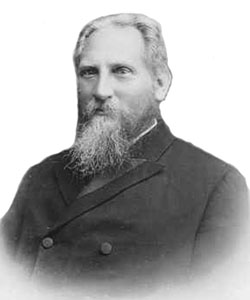
The predominant driving force pulsing through his veins, however, came from his mother Elizabeth, an intriguing personality who projected her own spiritual aura. Elizabeth Deacon, nee Browning, was the cousin of Robert Browning who, with his family’s claimed Rosicrucian lineage, introduced her to a wealth of colourful characters, including Oscar Wilde, who would become the Deacons’ next-door neighbour. Elizabeth was close to Oscar’s wife Constance, sharing her interest in the occult, with the pair attending séances together. In fact, Vyvyan’s name was a copy of Wilde’s own son’s name and, although the Deacons originally used the spelling ‘Vivian’ to differentiate them, he was to later change the spelling himself, noting a mystical significance in the letter ‘Y’. The Browning’s referrals also included W.B. Yeats who, in turn, opened the doors for Elizabeth to eminent members of the Golden Dawn. It was in 1895, the year of Vyvyan’s birth, that she made the acquaintance of a young James Ingall Wedgwood – a regular correspondent of Robert Browning – who would one day become one of Vyvyan’s teachers.
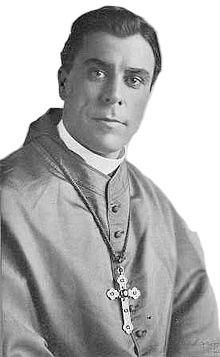
The trait that was to place Vyvyan in the ranks of Charles W. Leadbeater, Annie Besant and Aleister Crowley was that he, like they, did not simply follow and uphold traditional beliefs and philosophies. They claimed to actually communicate directly with otherworldly beings and, at times, act as vehicles in transmitting their messages to the Earthly realm.
Vyvyan first realised this ability when he was only eight years old. The occasion was an open-air Sunday school service where the regular preacher failed to show up. As the service was about to be cancelled, Vyvyan arose, walked to the dais and spontaneously began preaching. While this impressed the congregation, he himself was left feeling bewildered, especially in the face of some adults present who accused him of being demonically possessed. One kindly woman, however, comforted him by explaining that he had the rare and special gift of being used by those who dwelt on a higher plane. The event was publicised by the Daily Mirror, which hailed him as the ‘Boy Preacher’.
A Meeting of Minds in Australia
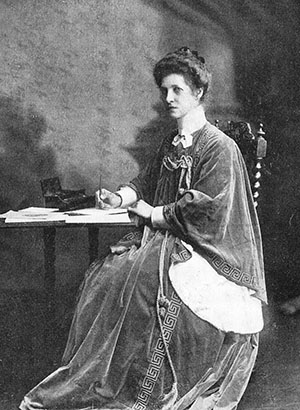
Vyvyan had met Eunice Mary Lew Tong, who was five years his junior, when he first arrived in Melbourne, and was besotted with her right from the start. In early 1916 he decided that a move to Sydney was in order and, not wanting to leave fifteen-year-old Eunice behind, they successfully sought permission from her recently widowed mother to marry and travel interstate together. It was his friend Veni Cooper-Mathieson, herself a Sydney-sider, who persuaded them that her city offered a more appropriate environment in which Vyvyan could establish himself as a healer, psychic medium and speaker. Sister Veni, as she called herself, was the voice of the New Thought movement and knew that their mutual acquaintance Charles W. Leadbeater, a member of the Theosophical Society (TS) and the Liberal Catholic Church (LCC), would open a whole new avenue for Vyvyan.
The Deacons lived rough when they first arrived in Sydney, moving accommodation from one spot to another, and it was only with the assistance of Theosophists Frank Bennett and James Wedgwood that they were able to set up a small herbal dispensary in Junction St, North Sydney. Bennett was said to be Aleister Crowley’s appointed representative in Australia for the Ordo Templi Orientis (OTO)1 and Vyvyan immersed himself in the activities of this group as well as the TS and their Esoteric Section, before going on to found his own society in 1917 called Christian Mystics of the Rosy Cross (CMRC).
Vyvyan had already befriended Krishnamurti, who was the same age, and on Sundays would often attend his meetings of the Order of the Star of the East, after having first participated in the Liberal Catholic Church service and then, later in the evening, going on to deliver his own lectures in public halls.
All these activities naturally kept him away from Eunice, often for days at a time, and she was left feeling lonely and depressed. Like her mother-in-law before her, Eunice had to adjust to the continual comings and goings. Notwithstanding the absences, the couple eventually had two daughters, Sybil, born 1918, then Vivienne in 1922, who would go on in adult life to write an in-depth account of her father’s life.
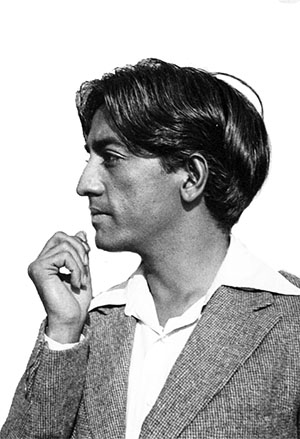
Concerning the scandal around Leadbeater’s relationship with Krishnamurti and other young men, she writes: “Vyvyan and Krishnamurti were born within a few months of each other and each received training from Leadbeater. It would be logical to surmise that their treatment by Leadbeater was similar. Vyvyan certainly admitted that Leadbeater had regressed him to previous incarnations. […] We know from his past that Vyvyan was particularly susceptible to the influence of older men, father figures that filled the void left by his own father’s disappearance from his early childhood. My own recollection of Leadbeater is of his being rather creepy, in contrast with the attractive Wedgwood.”2
Along with practicing hypnotism as a means to achieving higher levels of consciousness, Vyvyan, as a herbalist, had access to mind-altering drugs with which he experimented together with Frank Bennett and another friend, Vincent Pantin. He often stayed out overnight with them rather than at home with his wife. There were several occasions when a shortage of funds forced Vyvyan to seek labouring work and one such time was mid-1918, when he and Pantin went off fruit picking for a couple of months in Wyalong, in country New South Wales. Eunice busied herself in his absence, acting as his proxy in filling medicinal scripts for patients back in Sydney.
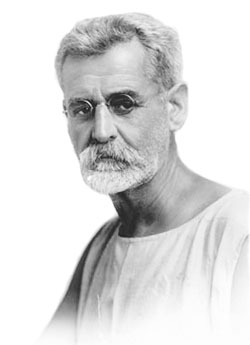
Vyvyan remained close to Leadbeater during 1919 while they studied the ‘Egyptian Rite of the Ancient Mysteries’ together. This was the year the scandal broke around Leadbeater’s involvement with young men, so the Deacons thought it prudent to distance themselves for a while by moving into a commune that had been founded by the late renowned naturist and sex-reformer William Chidley.
Early the following year, when ardent Spiritualist Sir Arthur Conan Doyle was preparing to tour Australasia, Vyvyan was approached by a prominent New Zealand Spiritualist group to visit them and pave the way for the events there. Knowing he already had a good reputation in that country, he eagerly set off for Christchurch in May 1920 for what was to become a two year stay. His daughter would later write about the spiritual atmosphere at the time and the flavour of his lecture material which blended Theosophy, Fabianism and New Thought together with Marx, Freud and Darwin, plus more than a hint of the New Testament. From a lecture in January 1921, she quotes a passage that underlines how he viewed the “constitution of man,” in what is now accepted by modern-day psycho-spirituality as the “triune nature” of humankind:
Man’s consciousness can be divided into three. The conscious mind corresponds to the economic world, the object world, and is the mind one always used in the present. Man’s subconscious mind corresponds to the subject world and from the depth of the subconsciousness come the demands for those things that are termed ‘the rights of the people’. […] Man’s super-conscious mind corresponds to the ideal world and holds within it all the desires and possibilities of the future. Intuitions from the super-conscious mind might be said to emanate from the spirit of man – the highest part of him.3
Shortly after moving on to Wellington, Vyvyan was joined by his mother Elizabeth, who had already followed him out from England to Australia, then soon afterwards Eunice also sailed to New Zealand to be with him when he fell ill. All the while he managed to earn sufficient income but when they all returned to Sydney in Easter 1922, to coincide with the arrival of Theosophical Society leader Annie Besant, the only means of earning a living was to conduct séances. He enhanced his reputation through the novelty of using aluminium trumpets as the passive recipients of sounds created on the psychic plane. The number of sitters he allowed to attend his “direct voice séances” was high, frequently twenty-three to twenty-eight people per session, as he needed to make each meeting pay as much as possible. It came as no surprise to Eunice then that, after receiving a letter from the Melbourne Spiritualist Society offering him a contract for steady work as a lecturer and medium, he quickly packed and set off, leaving her behind once again.
Public Lectures and Bad Press
It was 1924 and Vyvyan’s residence in the inner Melbourne suburb of West Richmond became known as ‘The Abbey’. Although Eunice and their two young daughters were soon reunited with him there, the relationship proceeded in an intermittent fashion, with them often living separately and Vyvyan engaging in a number of affairs. During such times Eunice tried to remain philosophical and console herself with prayer. She frowned on his increasing consumption of alcohol and would keep her distance from him when he drank. When they did share residence together, it was often with Eunice and her two daughters sleeping in one room and her husband in another. This was a repetitive pattern that continued right to the end.
The press published articles about Vyvyan from time to time, some of them expressing genuine interest in his work, while others were not so flattering. It was a defamatory piece in the Melbourne Truth in October 1928, under the headline “Vyvyan Deacon is a Fraud,” that set off a chain of life-changing consequences. The story accused him of being a parasitic charlatan who extorted money from his followers, describing him as a “Humbug churchman who is subject to two spiritual influences, ethereal and bottled.”4
Vyvyan engaged a solicitor and instigated a case of libel against the paper. In spite of the Truth engaging the legal services of the up-and-coming lawyer Robert Gordon Menzies – later to become Australia’s longest serving prime minister – the following year a jury ruled in Vyvyan’s favour, awarding him a record amount of 3,500 pounds. Naturally the Truth appealed the decision and it would be a year later in mid-1930 before they finally settled out of court.
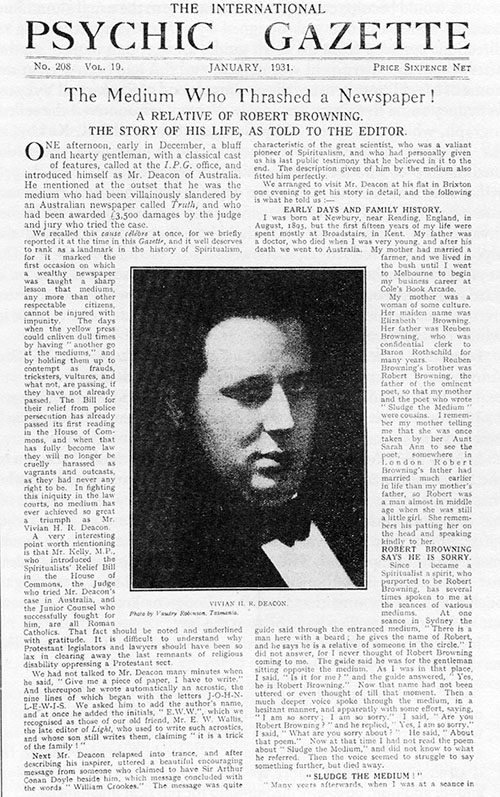
In the meantime Vyvyan had already decided to do a series of lectures in Tasmania, where Spiritualism and New Thought had gained wide popularity. His initial trip to Launceston was well received and covered favourably in the press. An overall view of his teachings can be gleaned from talks he delivered in early November 1929, as reported by The Examiner.
In the first of these, in the city’s Kings Hall on 1 November titled “Spiritual Science,” he revealed his underlying belief in the priority of spirit over matter, saying:
[T]he spiritual world warned mankind many years ago of the coming world war, and it could be shown that many recent discoveries in the scientific world were foretold from the spirit world years before the verification ultimately transpired. Spiritualism contended that the world had never been without adequate spiritual guidance at any time; that to every age and clime had just so much of the divine been made manifest as was suited to the proper growth of that particular age and clime.5
On the following Sunday night in his lecture “What Happens after Death” he decried the fact that Christendom was unable to provide positive knowledge about the afterlife. From The Examiner’s report we read:
As a matter of fact there are, broadly speaking, two ways whereby actual knowledge may be gained as to the fate awaiting our dear ones who have passed through the portal of death into the larger and fuller life of the spiritual world. The first way is accessible to all, without very much trouble being necessary. It is the way whereby knowledge is given to a person through some outside agency or at mediumship. The second way, the more satisfactory way, is that entailing some years of training and hard work, nevertheless truly worth-while, whereby one develops one’s own psychic faculties and observes the facts for oneself. Men like Sir William Crookes, Alfred Russell Wallace, and Sir Oliver Lodge are pioneers of the first way, and Andrew Jackson Davis, Rev. Stanton Moses, M.A. and Dr. Rudolf Steiner are pioneers of the second way.6
A week later he gave a talk on “Personal Magnetism” at the Mechanic’s Hall. This theme continues to be topical in its present-day form as ‘The Law of Attraction’. Vyvyan’s angle provided insight and guidance to his attentive audience.
Once we understood the nature of mental currents, we would learn that we each were a mental storage battery pregnant with potency. […] The saying in the Scriptures: To him that hath, shall be given, and from him that hath not, shall be taken away, even the little that he hath, could only be intelligible to the person who understood magnetic force. […] Desire in all forms is a mental current charged with power, and recognition of this fact and the utilisation of the power contained in desire by refusing to gratify each desire, thus extracting its power for one’s use, is the secret of personal magnetism. A certain restraint in thought, feeling, and word, is the insulation of magnetic power.7
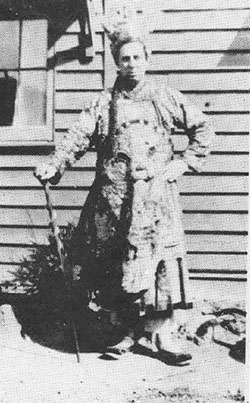
It is hard to discern whether his ideas on this subject may have been influenced by contemporary American New Thought exponents like Wallace Wattles and Napoleon Hill. Of course, by this time the fifth Solvay conference had taken place in Brussels where Einstein, Plank, Heisenberg and Bohr had acknowledged the existence of ‘mind over matter’.8 The practical element of this work was famously revisited with the release of Rhonda Byrne’s The Secret in 2006, putting personal magnetism and ‘The Law of Attraction’ back in vogue.
The Final Years
Being flush with funds from the defamation settlement, Vyvyan found himself yearning to return to England and, in late 1930, bought tickets for Eunice, Sybil, Vivienne and himself for the voyage from Melbourne to Southampton on the SS Jervis Bay. He would never set foot on Australian soil again.
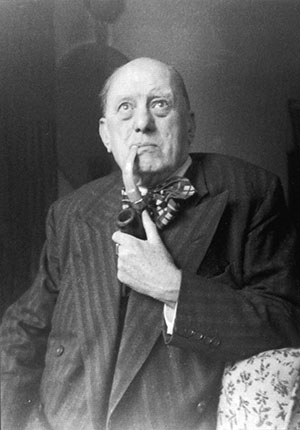
Although Vyvyan shared mutual acquaintances with Aleister Crowley, the pair did not actually meet until 1931. Crowley particularly admired his new friend’s skill in filing lawsuits against defamation and used the same tactic successfully himself. While their relationship essentially revolved around occult matters, Vyvyan did find himself constantly called upon to help scrape together enough cash to keep Crowley solvent. They remained close over the next seven years as Vyvyan supported himself by conducting séances, demonstrating hypnotism on-stage, performing psychic services and delivering lectures – one of the last ever being a joint presentation with Alice Bailey in late 1937 titled ‘The Cosmic Christ’.
A few months prior to that he had collapsed in the street, sustaining a skull fracture that was never properly treated and then, following a second fall and hospitalisation shortly afterwards, he passed away peacefully on 19 February 1938. He was 42 years of age.
Thus, the curtain fell on one of our most gifted proponents of psychic mediumship – one who formed a pivotal link in the golden chain of Australia’s esoteric legacy.
Footnotes
1. For OTO reference on Bennett see: www.collective777.com/#!oto–thelema/c1kx2
2. The Uncommon Medium by Vivienne Browning, 1993, Skoob Books Publishing Ltd, London, 46
3. Ibid., 77
4. Ibid., 123
5. National Library of Australia, trove.nla.gov.au/newspaper/
article/51629162
6. National Library of Australia, trove.nla.gov.au/newspaper/
article/51629583
7. National Library of Australia, trove.nla.gov.au/newspaper/
article/51630954
8. For more on the mind-over-matter debate see websites such as www.newthoughtwisdom.com/quantum-communication-mind-science-
consciousness.html
© New Dawn Magazine and the respective author.
For our reproduction notice, click here.

